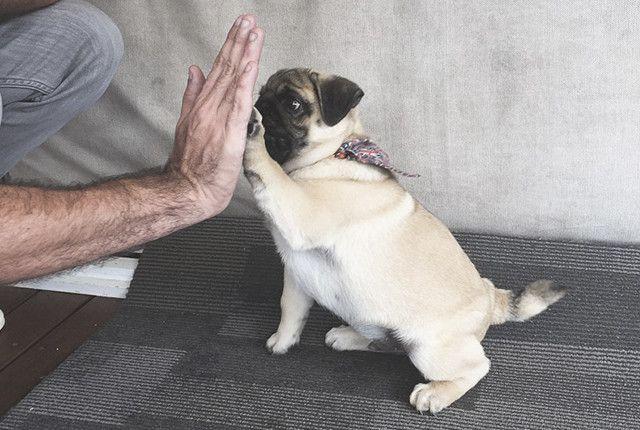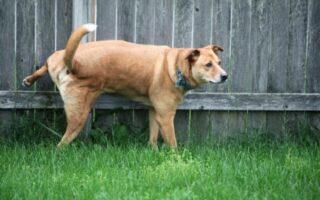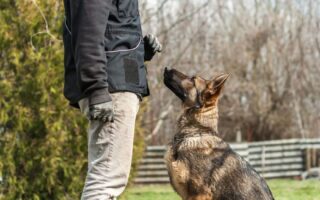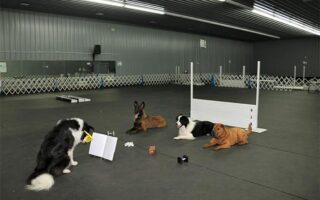Unlocking the Secrets of Pug Training: A Guide to a Happy Companion
In a world where love comes wrapped in adorable wrinkled faces and playful antics, pugs have carved a special niche in the hearts of countless dog owners. With their expressive eyes and unmistakable charm, these compact companions may seem like a bundle of joy at first glance. However, beneath that effortless cuteness lies the challenge of training a breed that often possesses a stubborn streak as vibrant as their personalities. Welcome to the world of pug training, where patience meets playfulness, and where understanding your furry friend can lead to a harmonious companionship. Whether you’re a new pug parent or looking to refine your approach, this guide will take you through essential techniques and tips, ensuring that your training journey is as rewarding as it is fun. Get ready to transform those pug puppy mischiefs into moments of achievement, because a well-trained pug is not just a dream—it’s a delightful reality waiting to be discovered.
Table of Contents
- Understanding the Unique Temperament of Pugs
- Effective Techniques for Housebreaking Your Pug
- Socialization Strategies to Foster a Well-Behaved Companion
- Engaging Activities to Keep Your Pug Mentally Stimulated
- Q&A
- In Conclusion
Understanding the Unique Temperament of Pugs
Pugs are known for their distinct personalities, which can be both charming and challenging for trainers. Their playful nature often translates into a love for fun and games, but they can also exhibit a stubborn streak that requires patience and ingenuity from their owners. When training a pug, understanding their unique temperament is essential to effectively communicate with them. Here are a few traits commonly observed in pugs:
- Affectionate: Pugs thrive on companionship and often seek human affection, making them eager to please.
- Stubborn: While they may be affectionate, pugs can be quite stubborn, sometimes ignoring commands if they do not feel motivated.
- Playful: Their love for play can be harnessed during training sessions, using toys and games as rewards to reinforce positive behavior.
Establishing a consistent routine is crucial when working with pugs, as they respond well to patterns. Positive reinforcement methods, such as treats, praise, and playtime, resonate with their inherent need for social interaction. Combining training with their playful side can make learning enjoyable for both the owner and the pet. To help you navigate the training process effectively, consider the following engaging techniques:
| Training Technique | Description |
|---|---|
| Clicker Training | Use a clicker to mark desired behavior, followed by a treat for reinforcement. |
| Short Sessions | Keep training sessions brief (5-10 minutes) to maintain their attention. |
| Consistency | Use the same commands and cues to establish clear communication. |
Effective Techniques for Housebreaking Your Pug
Housebreaking a pug requires a mix of patience, consistency, and positive reinforcement. Begin by establishing a regular routine for bathroom breaks, as this will help your pug understand when and where they can go. Take your pug outside frequently—especially after meals, playtime, and naps—to encourage them to associate the outdoors with bathroom relief. Consider using a specific command like “go potty” to help them recognize what you expect from them during these outings. Accidents may happen, but it’s essential to remain calm and avoid scolding, as this can confuse your pug and hinder their progress.
Incorporating positive reinforcement into your training regime can significantly enhance the housebreaking process. Offer your pug a small treat or praise immediately after they successfully relieve themselves outside. This will not only motivate them to repeat the behavior but also strengthen your bond. Maintaining a designated bathroom area in your yard can help your pug form positive associations with the space. Additionally, keeping a training journal to track their bathroom habits can provide insight into their progress and help you identify any patterns that may need addressing.
| Technique | Description |
| Establish a Routine | Take your pug out at regular intervals. |
| Positive Reinforcement | Reward with treats or praise for successful bathroom breaks. |
| Designated Area | Let your pug know their bathroom spot in your yard. |
| Tracking Progress | Keep a journal of their bathroom habits. |
Socialization Strategies to Foster a Well-Behaved Companion
To ensure your pug grows into a well-mannered and sociable companion, it’s crucial to expose them to various people, animals, and environments from an early age. Start with puppy socialization classes where they can meet other dogs and humans in a controlled setting. This not only enhances their social skills but also introduces them to basic commands. Additionally, consider these effective strategies:
- Frequent Outings: Take your pug to parks, pet-friendly cafes, and community events.
- Positive Reinforcement: Reward them with treats or praise for calm behavior around new experiences.
- Playdates: Arrange regular meet-ups with other dogs to encourage interactive play.
- Varied Environments: Expose them gradually to different sounds, sights, and smells to build confidence.
Another impactful approach is to create a structured interaction routine at home. This can be particularly beneficial in building your pug’s comfort level with visitors. Prepare a socialization schedule that alternates between friendly family members, neighbors, and other pets. Here’s a simple table outlining a sample weekly interaction plan:
| Day | Activity | Interaction Type |
|---|---|---|
| Monday | Puppy Playdate | With another dog |
| Wednesday | Neighborhood Walk | Meet local pets and people |
| Friday | Family Gathering | Interact with guests |
| Saturday | Pet Training Class | With other pups |
Engaging Activities to Keep Your Pug Mentally Stimulated
Keeping your pug engaged and mentally stimulated is essential for their overall well-being. Here are some enjoyable activities you can incorporate into your routine:
- Hide and Seek: This game is a fun way to engage your pug’s natural curiosity. Have someone hold your pug while you hide, then call them to find you.
- Puzzle Toys: Invest in high-quality puzzle toys that challenge your pug to work for treats, providing them with a rewarding experience.
- Training Sessions: Short, frequent training sessions not only teach your pug new commands but also stimulate their brain as they learn to associate your cues with actions.
- Interactive Feeder: Switch out your usual feeding bowl for an interactive feeder that requires your pug to solve a puzzle to access their food.
Socialization is another great way to enhance your pug’s mental stimulation. Consider the following methods to mix up their social experiences:
| Activity | Description |
|---|---|
| Dog Parks | Let your pug interact with other dogs, helping to improve their social skills. |
| Training Classes | Enroll in obedience or agility classes to socialize with other pets and people. |
| Playdates | Arrange playdates with other friendly dogs to create a fun and stimulating environment. |
Q&A
Q&A: Mastering the Art of Pug Training
Q: What makes pugs unique when it comes to training?
A: Pugs are wonderfully quirky dogs with big personalities packed into petite frames. Their stubbornness can be both a blessing and a challenge. They often crave attention and affection, which can work in your favor during training. However, their independent streak means that consistency and patience are key.
Q: At what age should I start training my pug?
A: It’s best to start training your pug as a puppy, around eight weeks old if possible. Early training not only helps establish good habits but also fosters socialization. However, older pugs can learn just as effectively; it’s never too late to teach your furry friend new tricks.
Q: What training methods are most effective for pugs?
A: Positive reinforcement is the way to go! Pugs respond well to treats, praise, and playful activities. Using rewards to reinforce desired behaviors creates a positive association with training sessions. A bit of creativity, like incorporating toys or fun games, can also keep your pug engaged.
Q: Are there specific commands I should focus on training my pug?
A: Absolutely! Start with basic commands such as “sit,” “stay,” “come,” and “leave it.” These foundational skills can prevent potential mishaps and improve safety. Once your pug masters these, you can introduce fun tricks like “roll over” or “play dead” to stimulate their minds and strengthen your bond.
Q: How long should each training session last?
A: Keep training sessions short and sweet, ideally around 5 to 10 minutes. Pugs can easily lose focus, so multiple short sessions throughout the day will yield better results than one long study marathon. Don’t forget to keep it light-hearted and fun!
Q: What common challenges might I face when training a pug?
A: Pugs may sometimes exhibit a charming blend of stubbornness and distraction. They can easily get sidetracked by intriguing smells or sights. Additionally, their love for food might mean they’ll try to manipulate the situation to get a treat. Remaining patient and gentle while setting clear boundaries is crucial in overcoming these hurdles.
Q: How can I socialize my pug while training?
A: Socialization is a vital aspect of training. Take your pug to dog parks, involve them in puppy classes, or arrange playdates with other dogs. Introducing them to different environments, people, and sounds will help them develop confidence and good manners as they grow.
Q: Are there any training tools that can help?
A: Yes! Consider using a clicker to mark positive behaviors, a harness for better control during walks, and treat bags for easy access to rewards. Always choose tools that prioritize your pug’s comfort and well-being.
Q: What’s the most important thing to remember about pug training?
A: Enjoy the journey! Pug training should be a bonding experience filled with laughter and joy. Embrace their unique quirks, celebrate small victories, and never underestimate the power of a loving and patient approach. Happy training!
In Conclusion
As we wrap up our exploration into the delightful world of pug training, it’s evident that patience, consistency, and a sprinkle of creativity are key ingredients in nurturing a well-behaved companion. Whether you’re teaching basic commands, refining social skills, or embedding good habits into your pug’s routine, remember that the journey is as rewarding as the destination. Each snort, wiggle, and playful bark brings new opportunities for bonding and learning. So, embrace the quirks that make pugs uniquely lovable and celebrate the small victories along the way. With the right approach and a heart full of love, you can turn training sessions into joyful moments that deepen the extraordinary connection with your furry friend. Happy training!



